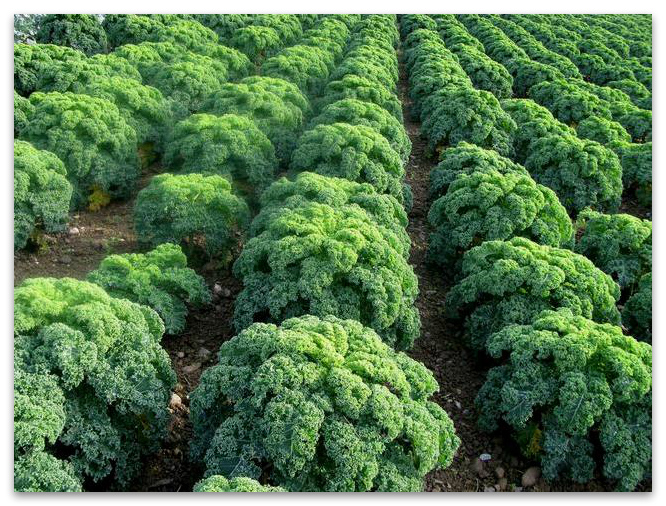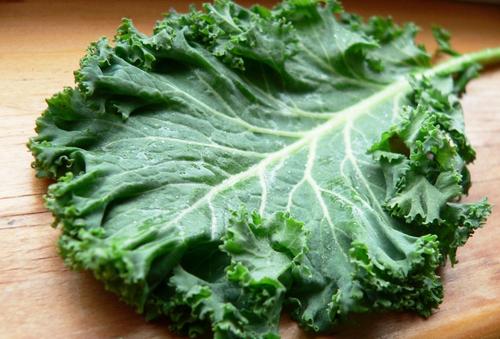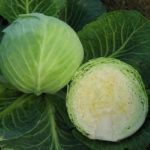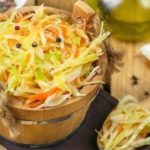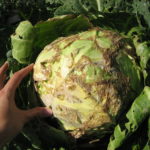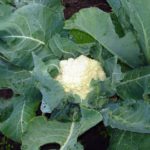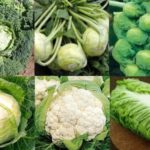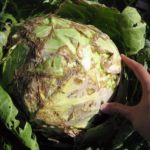Kale cabbage is a wild variety. This is a leafy version of the crop that does not form a head of cabbage, but is more reminiscent of a giant curly lettuce. Depending on the variety, kale has different leaf colors from light green to bright purple. Moreover, the final, brightest and most saturated color acquires after frost.
Description
In America and England, this cabbage is called “Russian red”, although in Russia this species is not very common and is more often used as a decorative one for decorating gardens and creating park compositions, due to the variety of colors.Recently, kale, along with other types of similar cabbage, has been gaining popularity, especially among adherents of a healthy lifestyle.
Kale cabbage contains a large number of different microelements necessary for our body. It contains:
- Copper;
- Zinc;
- Iron;
- Selenium;
- Sodium;
- Magnesium;
- Phosphorus;
- potassium in large quantities;
- easily digestible calcium;
- vitamins B1, B2, C, E, K, PP and active vitamin C.
The content of Retinol (vitamin A) in an average portion exceeds the daily norm required for a person by 2 times, but this does not create an excess of this vitamin, because it is present in the form of beta-carotene. In fact, this unique vegetable contains only 9 essential and 18 non-essential amino acids.
In terms of protein content, kale can replace meat, so it has earned special attention among vegetarians. Kale is a supplier of Omega-3 fatty acids, which are so necessary for our body. Scientists have identified an antibacterial effect, the ability to destroy cancer cells and the ability to effectively reduce cholesterol levels. Kale is recommended for the treatment of glaucoma and other eye diseases, as well as for increasing the overall immunity of the body.
It is capable of removing toxic substances from the body in case of complex chemical poisoning, and is an antioxidant.
Only leaves are eaten, preferably raw, so they retain as much as possible all their beneficial microelements and minerals, although even after heat treatment they still contain enough substances necessary for our body. Nutritionists recommend eating this type of cabbage daily.
In the menus of different countries, it is used to prepare a wide variety of dishes: salads, soups, side dishes, cabbage rolls, and even prepared for the winter.They can be frozen and dried, and basically used like regular cabbage with a higher content of benefits for humans.
Red and purple varieties of kale add a distinctive color to preparations and can be used as a natural food coloring. This is the description of this plant.
Kinds
Kale cabbage has quite a lot of varieties that differ from each other in color, size, leaf curl, taste and microelements content, so red varieties are even called iron cabbage, due to the high iron content. Some types of collards have soft leaves, while others are tougher and more suitable for cooking. After the first frost, kale turns a bright purple color and the leaves become softer.
All varieties of kale are biennial, frost-resistant, and can withstand temperatures of -15°C -18°C. After wintering, they quickly become covered with new leaves, giving an early harvest.
There are enough varieties of Kale to satisfy the taste of even the most selective gardener:
- red;
- Siberian;
- curly;
- prime minister;
- cane;
- blue dwarf;
- black Tuscany;
- scarlet;
- redbor;
- reflex.
Among these varieties you can find both quite compact ones (blue dwarf - often mistaken for an ornamental plant) and tall ones (cane Kale can reach 2 meters). Redbor F1 kale will decorate any landscape design, reaching a height of one and a half meters, it has red curly leaves, and in general it looks very unusual on the site, like a palm tree. Black Tuscany is also very attractive for garden decoration; it has dense, tuberculate leaves with a matte bluish tint.
The number of hybrids bred increases every year, so the list presented is not exhaustive.
The average ripening of cabbage is 75 - 90 days, but there are also earlier ripening varieties. In general, you can pick leaves after they reach a length of 20 cm, all season until late autumn, and new ones will grow in their place. Before wintering cabbage cut to a height of about 10 centimeters, and in the spring it is again covered with carved leaves. Many gardeners leave bushes unpruned, which is also acceptable.
If there are very severe frosts in your region in winter, then it is better to sprinkle the cabbage with mulch, but in most regions there is enough snow cover to prevent the crop from freezing.
How to grow cabbage
In order to grow Kale in your garden, you do not need any special skills, especially if you have previously had experience growing any garden and vegetable crops. To collect leaves for greens earlier, seeds should be planted on seedlings in early April. Before planting, the seeds can be kept in a special solution to improve germination, or simply wrapped in damp gauze for several days, after keeping them in the freezer for a week.
The gauze should be periodically moistened to avoid drying out. After the seeds have sprouted, they should be planted in pots (trays) with a nutrient mixture; you can use a store-bought one for seedlings. The pots are covered with film, creating a greenhouse effect and preventing the top layer from drying out, and placed in a warm place.
Shoots usually appear on days 5-7, after which the film is removed and can be covered with glass caps, it all depends on the climatic conditions of the environment.
At the end of April or beginning of May, seedlings can be planted in the ground; they are not afraid of frost. Before planting, the bed should be pre-prepared, mineral fertilizer should be added, compost and wood ash can be added. Planting is done at a distance of 30-45 cm, but here too everything depends on the Kale variety.
Plant the sprouts, covering them with soil up to the bottom leaf. You can plant several different types of cabbage in different corners of the flower garden or even form a whole composition from them, placing low-growing varieties on the first line and then ascending. In this case, you will be able to combine business with pleasure, using all your imagination to create a unique look for your garden.
You can plant seeds directly into the ground; this method differs only in the later start of harvesting. Caring for kale throughout the season is not particularly different from caring for other garden crops. Several times a season you should loosen the soil, apply fertilizers, weed, and water as the soil dries out. It is recommended to hill up kale, like regular cabbage, 2-3 times per season. This is the principle of growing Kale cabbage.
When choosing a location for the future placement of beds for kale, preference should be given to well-lit areas. Kale curly cabbage does not like sour soil; special fertilizers should be applied; a low concentration solution of citric acid can also help against souring of the soil.
Ways to control pests and diseases
Nowadays, quite a lot of varieties have been bred that are less susceptible to diseases and pests.If you use fresh greens from the bush, then you should use traditional methods against diseases and pests, because treatment with chemicals will make our cabbage unsuitable for consumption. Calendula flowers will keep butterflies away from our crops.
In dry weather, after sunset, you can spray our bushes with a solution of a small concentration of seven percent table vinegar, diluted in a bucket of water, which will help protect our seedlings from garden pests. You can dust young plants with wood ash and tobacco dust. All plant treatment procedures are carried out in dry, windless weather; after rain, the procedure is repeated as necessary.
Chemicals should be used as a last resort, if traditional gentle methods do not help save the vegetable crop. On curly cabbage there are moths, flies, cruciferous flea beetles, rapeseed sawfly, flower beetle, and wireworm. Mole crickets pose a danger to the root system. If not properly cared for, if the leaves are too waterlogged, slugs can live in them.
Diseases of kale the same as for any cruciferous crop. But our gardeners still more often encounter pests on their plots than diseases. With proper agricultural technology, proper care and protection from pests, you can get a very good harvest, and have fresh, vitamin-rich greens on the table all summer.
Storing kale in the refrigerator is permissible for up to 7-10 days; the leaves can be frozen for the winter; after defrosting, they become even sweeter and have a more delicate texture.
To get an early harvest, you should choose the Premier variety; this is a fast-growing Kale, useful for diseases of the gastrointestinal tract.Gourmets highlight the Dino variety as the most delicious; it has thin leaves. Curly Kale is the sweetest. Choose Kale according to your taste and get maximum benefits.
Kale on the table is very good fresh, in salads, but in ready-made dishes it is no worse. Collard greens go well with meat. Sauerkraut Kale is no less useful in terms of vitamin content than fresh or stewed cabbage. Bright multi-colored leaves of Kale will serve as a wonderful decoration for holiday dishes on any table. They can serve as a base on appetizer serving plates.
Choose Kale to suit your taste and be healthy! Let the eye enjoy bright colors and unusual shapes, and let the body enjoy healthy vitamins and minerals!

